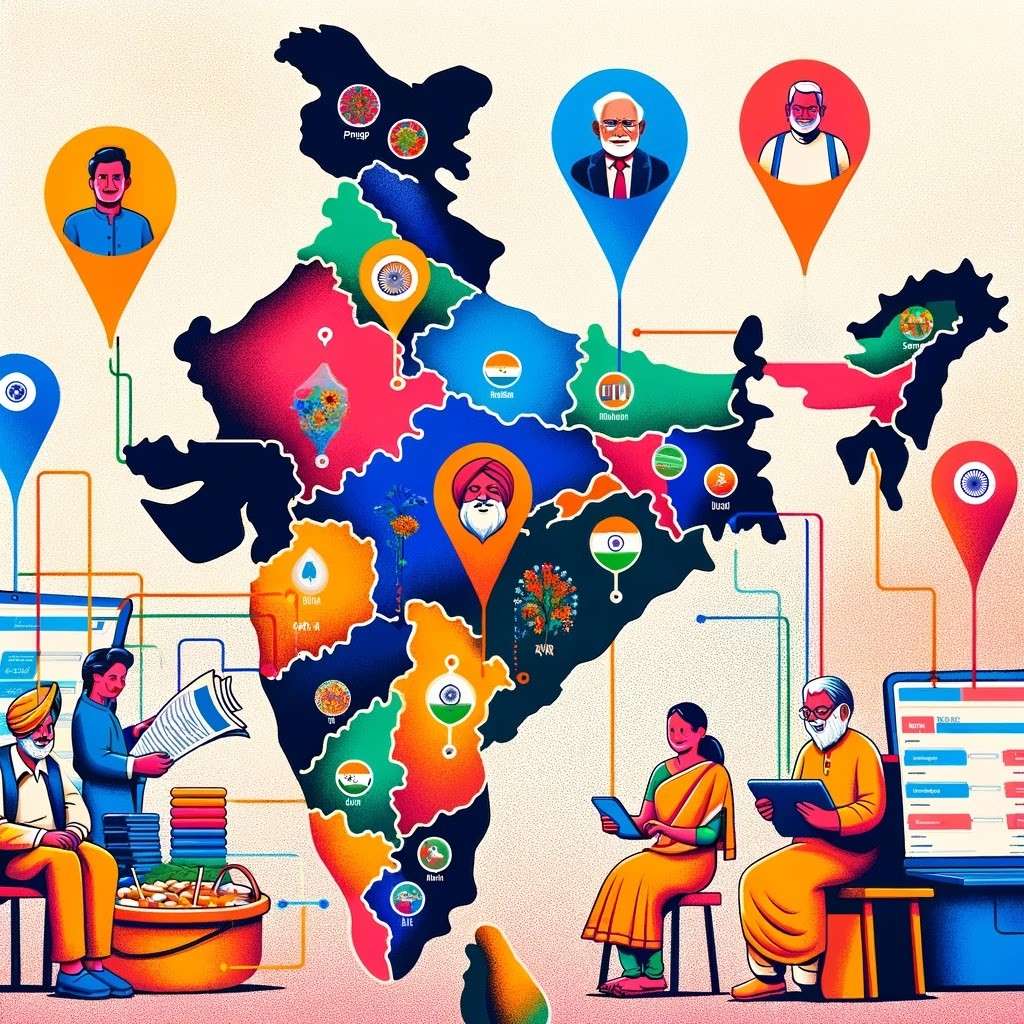As per 2024 USA Poll Schedule for today’s political campaigns, gaining a comprehensive understanding of the electorate is paramount to driving successful outreach, engagement, and ultimately, turnout at the ballot box. However, all too often campaigns still rely on broad, one-size-fits-all strategies that fail to account for the immense diversity within the voter population.
The reality is that communities across a state or nation can vary tremendously based on factors like geography, demographics, cultural influences, economic circumstances, and numerous other local dynamics. A farmer in a rural town is going to have vastly different lived experiences, media habits, and priorities compared to a young, multi-lingual professional in a booming metropolitan area. Crafting a singular campaign message and standard outreach playbook to appeal equally to both audiences is extremely difficult, if not impossible.
This is where the strategy of regional market segmentation becomes an indispensable tool for modern campaigns looking to forge authentic connections with different pockets of voters. At its core, regional segmentation involves dividing the overall electorate into distinct segments that share key geographic, demographic, psychographic, behavioral and other traits.
From Political Party Manifestos 2024 by leveraging in-depth data and analysis on areas’ racial/ethnic compositions, income and education levels, employment patterns, cultural influences, trusted media sources, and numerous other variables, campaigns can start painting richer profiles of the unique voters that comprise each community. With these segment profiles in hand, campaigns can then deploy localized, contextually-relevant outreach, messaging, and even policy positioning that directly speaks to the specific circumstances and priorities shaping different regional groups.
The process starts by diving into a wealth of available data sources to identify and map out such critical regional variables across a given geographic territory. Looking at population demographics from census data, researching consumer spending and media consumption reports, analyzing cultural backgrounds and language preferences, even examining factors like transportation patterns and availability of internet/cellular access – all of this quantitative and qualitative data can feed into building comprehensive community profiles.
Once armed with a foundational understanding of what distinguishes different regional segments, campaigns can start developing customized outreach plans tailored for maximum relevance and resonance. Elements like:
Message Framing & Content Priorities
By Political Party Manifestos 2024 Campaigns can craft regional messaging hierarchies and content pillars that elevate the specific issues top-of-mind for a given area? For example, segments comprised of rural farming communities in Iowa may be most compelled by messaging focused on agricultural policies like crop subsidies, water rights, commodity pricing, and rural investment programs. Whereas messages prioritizing economic policies around job growth, public transportation infrastructure, and education initiatives could take precedence for outreach targeting urban working professional segments in cities like Atlanta.
Channel Strategy & Media Mix
2024 USA Poll Schedule effective regional segmentation also extends to mapping out the optimal channels, platforms, publishers and influencers proven to have the highest reach and trust within a particular community. For instance, an older demographic segment in Pennsylvania may primarily consume information via traditional print newspapers, AM radio, and local TV broadcasts. In contrast, a campaign looking to reach younger Hispanic voters in Nevada would need to prioritize digital/social platforms like Instagram, TikTok, streaming services, and Spanish-language digital publishers to achieve effective penetration.

Experiential & People-Based Outreach
Beyond optimizing messaging content and media vehicles, regional segmentation can enhance campaigns’ abilities to facilitate hyper-local face-to-face outreach. For a campaign trying to connect with Native American tribal communities across New Mexico and Arizona, recruiting and training field teams comprised of members of those same tribal nations, hosting town halls on reservations, participating in regional cultural events like pow wows – all of these people-based grassroots efforts rooted in the specific attributes of that voter segment are paramount for building trust and turnout.
Policy & Proposal Prioritization
Political Party Manifestos 2024 inevitably, not every issue or policy proposal will resonate universally across all regional segments. Astute campaigns will invest in surveying and qualitative research to pressure test policies and identify areas of philosophical alignment or conflict across their strategically vital segments. With these insights, campaigns can then prioritize and reframe proposals with segment-specific positioning to maximize perceived value among different constituencies. For example, a progressive policy platform centered on policies like student loan forgiveness and housing affordability might take precedence when shaping platform messaging for young diverse urban renters. Whereas positioning around economic policies like domestic manufacturing, mining, and job retraining programs could be elevated as top-line messaging when targeting regional voter segments comprised of blue-collar workers and families in the Rust Belt.
The potential opportunities unlocked by regional segmentation are compelling, but admittedly the required data investment, strategic planning workload, and cross-functional coordination can be daunting for campaigns to implement effectively. Having to essentially develop parallel outreach tracks and campaign instances for each critical segment can exponentially increase operational complexity.
Conclusion
In today’s fragmented media landscape where attention is the scarcest commodity, campaigns can ill-afford blasting a generic, one-note message that gets drowned out or overlooked entirely among key voter blocs. Smart campaigns are embracing regional segmentation not just as a tactical tool, but as a fundamentally different way of thinking about the electorate. By leading with empathy, localized context, and authentic understanding of the voters they’re trying to reach, campaigns can transform detached, blanket outreach into a nuanced, resonant movement that forges lasting connections.
A Note: Images in this Article are AI Generated.


